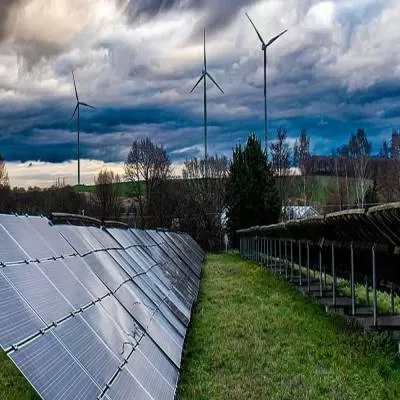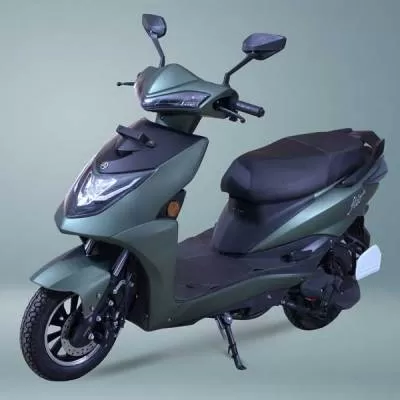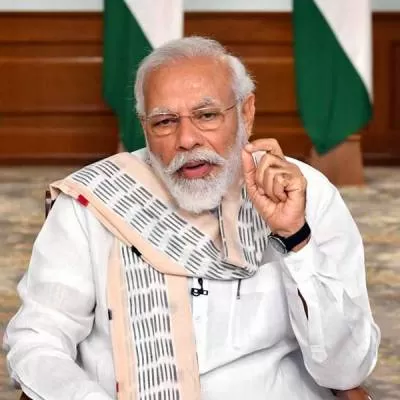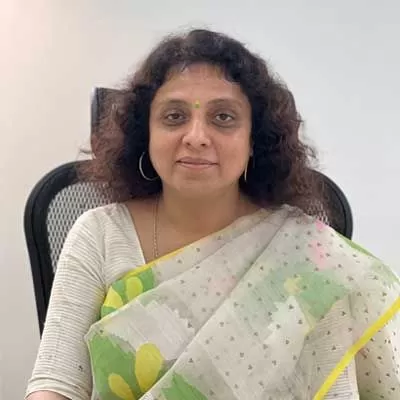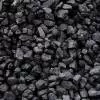- Home
- Infrastructure Transport
- ROADS & HIGHWAYS
- The Consummate Professional
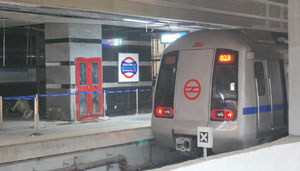
The Consummate Professional
"Civil engineering deals with developmental works and it is the prime engine behind a country's development and growth," says JL Khushu, Principal Advisor, Era Infra Engineering Ltd. "I wanted to play a role in this nation-building process. The projects we engineers develop are in the service of humanity for generations and this gives us a sense of pride and immense satisfaction." Khushu has reason to be proud with a career spanning five decades and having handled a variety of projects in India and abroad. His project portfolio extends from residences, offices, hospitals, hotels and universities to industrial structures, highways, bridges, railways, metros, airports, water supply and sanitary installations, city development and landscaping. In his view, the most challenging have been the highways and underground metros.
"Highways need efficient design and engineering with smart logistics and planning while metros have tight time, quality and safety schedules," he shares. "In underground metros, we have to deal with a variety of issues owing to subsoil strata conditions, high water tables and damage control on the surface structure because of vibrations generated by tunnel boring machines." In addition to design and construction, Khushu has also undertaken quality audit of highways, tendering, inventory control and materials management, value engineering and arbitration. He has improvised methods for speedy and economic construction, laying standards for construction materials with in-built checks for quality assurance. Indeed, his big picture focus, analytic bend of mind and passion for excellence continue to occupy centre-stage even today. At the age of 72, as passionate as ever about his profession, Khushu shares his views and experiences with CW:
Professional perspective
Managing the timeline and cost line of a project within limits without sacrificing quality and safety is the greatest challenge a civil engineer faces today. This is largely owing to shortened project periods and highly competitive bidding. To retain the bottom line, the time overrun of projects has to be brought down practically to zero, particularly for large projects. With the use of improved construction techniques, modern equipment and effective project management, it is possible to meet this challenge. In today's public and political scenario, an engineer also has to counter a challenge of a different nature, as some of his roles and responsibilities may interfere with his professional individuality and create a conflict in his professional career.
Public vs private
While working in the public sector involves more regulatory and directional control, in the private sector one is at the front desk of planning and execution. I find that engineers in the private sector are generally strong in execution, material management and use of modern equipment but frail in planning and documentation. However, this can be improved significantly through intensive training programmes and software aids. A mix of the public and private sector can do wonders like the public-private partnership (PPP) model, in which the strengths of the public and private sector are combined to achieve cost-effective and sustainable growth. In BOT or DBFOT models, identification of risks in execution and proper sharing of risks between the public and private sector are the keys to success. We need trillions of dollars of capital spending to create world-class infrastructure and the government alone cannot raise such large-scale funding. Therefore, PPP can be an effective solution but it can succeed only whenthere is proper risk identification, apt risk allocation and a mechanism of measuring successful fulfilment.
India vs international
There is a vast difference in working in the construction sector in India and abroad. While an Indian software engineer can start working on the day he arrives in any part of the western world, an Indian civil engineer can start work only after adequate training in site regulation, safety or quality procedures and usage of modern equipment. In developed countries, total planning is done well before the construction starts, method statements are prepared for all major items of work and approved before execution. All designs and drawings are finalised and approved at the planning stage. Quality and safety manuals regulate day-to-day working on site. Modern equipment is inducted to save time and cost. The hassles of taking detailed measurements are sometimes dispensed with and measurements are made on the basis of photographic documentation at the project site.
Phenomenal projects
I consider two projects as Indian engineering marvels: the Bandra-Worli Sea Link in Mumbai and the Jawahar Tunnel in Banihal, Jammu & Kashmir. The sea link with a 4 km long cable stayed bridge with an eight-lane, twin carriageway has consumed 90,000 tonne of cement and is 63 times the height of the Qutab Minar.
The steel wire used to build this bridge is equivalent to the circumference of the earth. The execution of the bridge through deep sea water with high safety standards demanded a high level of professionalism. The bridge has brought about fuel saving of around Rs 100 crore per annum and reduction of travel time by 20-30 minutes.
The Jawahar Tunnel, built in 1956 at a height of 2,194 m above sea level, has two tubes of 2.85 tonne each. Built by German engineers, the tunnel cuts through the gigantic Pir Panjal mountain range. The tunnel facilitates round the year road connectivity between Srinagar and Jammu that used to get cut off for weeks together owing to heavy snowfall.
Technology take
In the past two decades, India has witnessed large-scale infrastructure development that led to a high degree of mechanisation, and use of modern construction methods and techniques. For instance, metro projects with deep underground tunnels brought a sea change in construction techniques with the deployment of sophisticated machinery. The concept of top-down construction or 'partially top down and partially bottom up' construction was introduced for underground projects.
Other developments include automatic robotic and semi-automatic parking systems built with imported technology, Nano technology in construction materials, use of heavy-duty automatic batching plants, heavy-duty modern cranes, concrete boom placers, piling rigs with sophisticated attachments for diaphragm wall, automatic bituminous plant, sensor-operated bituminous pavers and concrete pavers etc. Yet, we are far behind in the use of modern, innovative technology, compared to our counterparts in the world. We definitely need technology to upgrade the basic requirements of our country. But all such technology cannot be imported as much of it cannot be directly converted on ground to suit Indian conditions. Hence we need to encourage R&D in the field of technology.
Engineering efficiency
A successful civil engineer should have the ability to look after all the three key aspects of construction: time, cost and quality. Failure to plan proper site lay-out in advance is a prime cause for operational inefficiency. Site management involves directing and co-ordinating human and material resources with modern management techniques to achieve pre-determined objectives of cost, time and quality. The site organisation chart should be effectively prepared and dovetailed for site implementation. Efficient documentation, inventory control, proper utilisation of resources, controlling material wastage, are other qualities an engineer should possess. In brief, a civil engineer must have all-round skill and leadership quality in engineering, finance, material management and human resource development.
Major projects
- Thimphu-Phuentsholing Highway in Bhutan
- International Highway (Asian Highway A2) from East to West in Nepal
- Indo-Bangladesh Border Road about 1,400 km long with 40 major steel truss girder superstructure on well foundations
- DMRC Metro Airport Express Line Underground Tunnel and Station by 'cut and cover' method
- Three highways of NHAI on BOT model
- NTPC Thermal Power Station at Ramagundam 2+500 MW
- Highway and 15 highway bridges on Asian Highway A2 in East West Highway, Nepal 3,000 residential quarters for Central Government employees in New Delhi
- New campus for Jawaharlal Nehru University (JNU), New Delhi
- International Centre for Genetic Engineering and Bio-Technology in New Delhi (a UNIDO project)
- Institute of Criminology and Forensic Science in Rohini, New Delhi
- Extension to Ashoka Hotel, New Delhi
- Renovation of Hyderabad House, New Delhi
- Institute of Pathology for Indian Council of Medical Research
- Extension of Supreme Court of India, New Delhi
- Outdoor patient department for Safdarjung Hospital, New Delhi
- School of Environmental Sciences, JNU, New Delhi
- Indian Garden for International Garden and Greenery Exposition 1990 in Osaka, Japan
Track record
Jawahar Lal Khushu
Academic:
- 1959: Bachelor of Science from Amar Singh College, Srinagar, Jammu & Kashmir
- 1963: Bachelor in Civil Engineering from Jiwaji University, Ujjain, Madhya Pradesh
- 1984: Masters in Structural Engineering, Punjab University, Chandigarh
Professional
- 1964-1967: Assistant Executive Engineer, Border Roads Organisation, Ministry of Transport
- 1967-2002: Central Public Works Department (CPWD), Ministry of Urban Development; joined as Assistant Executive Engineer and climbed up the ladder to become Chief Engineer in 1996
- 2002-2005: Consultant, Engineering India Ltd; Advisor, Rajiv Gandhi Relief & Welfare Trust (Rajiv Gandhi Foundation); Advisor to several Indian construction companies
- 2005-2012: Whole Time Director, Era Infra Engineering Ltd, a flagship company of Era Group
- 2012 to date: Principal Advisor, Era Infra Engineering Ltd
- Member of Indian Roads Congress and Indian Building Congress
- Member of an Indian Government delegation to Japan and Moscow for mutual cooperation for specific works
- Travelled widely to several countries including Bhutan, China, Nepal, France, Italy, Japan, Korea, Oman, Saudi Arabia, Russia, USA and Zambia
Recognition
State Governor's Medal for exemplary performance in civil construction in the development of Arunachal Pradesh
Challenge Zone
PROJECT 1
Name and location: Design and construction of Dwarka sector 21 underground station of Delhi Metro
Period: 2008-2010
Cost: Rs 175.31 crore
Client: Delhi Metro Rail Corporation
Background: The construction of the underground station with a length of 258 m (approximately) included cut-and-cover tunnels, associated structures like ventilation shafts, cross passages, ramps, utilities and galleries as well as structures above ground. In addition, bore-well, rain harvesting wells, boundary walls and road works were also carried out. "The difference between the first lowest and second lowest bidder was more than Rs 50 crore," reveals Khushu. "While we were the first lowest and our design was based on the open cut-and-cover method, the second lowest bidder presumably quoted based on the construction of a diaphragm wall for the tunnel. As there was ample space available for the cut-and-cover method, without the diaphragm walls, we executed the job accordingly."
Specifications: Cut-and-cover tunnels with a standard gauge line of airport line: 710 m (approximately); broad gauge line: 1,206 m (approximately); connecting the station to standard gauge depot (single standard gauge lines): 748 m (approximately). Challenges: The work was awarded at the advent of the monsoon and there was heavy rainfall in the pre-monsoon seasons, which flooded the open cut of the tunnel. The work had to be stopped and restarted after the monsoon was over. "As our construction was simple, with the cut-and-cover method, we still could complete the job in time. Thus, the best appraisal of the project before tendering helped us get the project, execute it in time and save Rs 50 crore for the client," shares Khushu.
Project 2
Name and location: Construction of Thimpu-Phuentsholing Highway in Bhutan
Period: 1962-1968
Client: Government of India
Background: The highway that links Phuentsholing, to Bhutan's capital Thimpu, was executed under Border Roads Organisation, Ministry of Transport, Government of India. "Until 1960 there were no motorable roads in Bhutan and the towns were connected only by footpaths and mule tracks," says Khushu. "It used to take six days to travel from Thimpu to Phuentsholing, which was reduced to just six hours after the highway was completed." This highway has since been upgraded to Asian Highways Standard.
Specifications: The highway with a total length of about 179 km was constructed with a 6.9 m formation width to cater to a traffic volume of 145 vehicles per day. The road had to be cut across the contours of the Himalayas, elevating from 230 m above mean sea level (MSL) at Phuentsholing to over 2,400 m above MSL in Thimpu. An adequate hill side 'V'-shape drain with four to five culverts per km was provided as the area was subjected to heavy rainfall.
Challenges: The extreme climatic condition, the heavy rainfall reducing the work duration and vertical hard rock cut made the hill excavation most challenging. "Special rock drills with heavy compressors were used with the drillers suspended from elevated cliffs with safety belts around their waist," elaborates Khushu. "These drill holes were then charged with explosives and massive blasting was done to cut through the hill. This process had to be repeated almost all along 80 km of the highway passing through thick dense forest over steep hard rock cliffs." The Sorchun slide area, with five legs of the hairpin bend on one face of the highway, posed yet another challenge. Every monsoon, in this slide area, soil and shale with rainwater would often flow like lava, resulting in large hill mass falling down and blocking the road on all the legs of the Sorchun bend. Clearing up the blocks was a herculean task. "To solve this problem we watched the behaviour of the hill during heavy downfalls and finally arrived at a solution - massive bamboo plantation along with reinforced cement concrete chutes from the topmost leg of the Sorchun bend to the lowest point that would carry the gushing flood water safely through the culvert mouth at different locations, preventing the culvert flow mixing with the hill landmass."
(For the full version, log on to www.ConstructionWorld.in/webx) To share your engineering experience with us, write in at feedback@ASAPPmedia.com
In a series of interviews with prominent civil engineers, JANAKI KRISHNAMOORTHI meets JL Khushu, Principal Advisor, Era Infra Engineering Ltd. "Civil engineering deals with developmental works and it is the prime engine behind a country's development and growth," says JL Khushu, Principal Advisor, Era Infra Engineering Ltd. "I wanted to play a role in this nation-building process. The projects we engineers develop are in the service of humanity for generations and this gives us a sense of pride and immense satisfaction." Khushu has reason to be proud with a career spanning five decades and having handled a variety of projects in India and abroad. His project portfolio extends from residences, offices, hospitals, hotels and universities to industrial structures, highways, bridges, railways, metros, airports, water supply and sanitary installations, city development and landscaping. In his view, the most challenging have been the highways and underground metros. "Highways need efficient design and engineering with smart logistics and planning while metros have tight time, quality and safety schedules," he shares. "In underground metros, we have to deal with a variety of issues owing to subsoil strata conditions, high water tables and damage control on the surface structure because of vibrations generated by tunnel boring machines." In addition to design and construction, Khushu has also undertaken quality audit of highways, tendering, inventory control and materials management, value engineering and arbitration. He has improvised methods for speedy and economic construction, laying standards for construction materials with in-built checks for quality assurance. Indeed, his big picture focus, analytic bend of mind and passion for excellence continue to occupy centre-stage even today. At the age of 72, as passionate as ever about his profession, Khushu shares his views and experiences with CW: Professional perspective Managing the timeline and cost line of a project within limits without sacrificing quality and safety is the greatest challenge a civil engineer faces today. This is largely owing to shortened project periods and highly competitive bidding. To retain the bottom line, the time overrun of projects has to be brought down practically to zero, particularly for large projects. With the use of improved construction techniques, modern equipment and effective project management, it is possible to meet this challenge. In today's public and political scenario, an engineer also has to counter a challenge of a different nature, as some of his roles and responsibilities may interfere with his professional individuality and create a conflict in his professional career. Public vs private While working in the public sector involves more regulatory and directional control, in the private sector one is at the front desk of planning and execution. I find that engineers in the private sector are generally strong in execution, material management and use of modern equipment but frail in planning and documentation. However, this can be improved significantly through intensive training programmes and software aids. A mix of the public and private sector can do wonders like the public-private partnership (PPP) model, in which the strengths of the public and private sector are combined to achieve cost-effective and sustainable growth. In BOT or DBFOT models, identification of risks in execution and proper sharing of risks between the public and private sector are the keys to success. We need trillions of dollars of capital spending to create world-class infrastructure and the government alone cannot raise such large-scale funding. Therefore, PPP can be an effective solution but it can succeed only whenthere is proper risk identification, apt risk allocation and a mechanism of measuring successful fulfilment. India vs international There is a vast difference in working in the construction sector in India and abroad. While an Indian software engineer can start working on the day he arrives in any part of the western world, an Indian civil engineer can start work only after adequate training in site regulation, safety or quality procedures and usage of modern equipment. In developed countries, total planning is done well before the construction starts, method statements are prepared for all major items of work and approved before execution. All designs and drawings are finalised and approved at the planning stage. Quality and safety manuals regulate day-to-day working on site. Modern equipment is inducted to save time and cost. The hassles of taking detailed measurements are sometimes dispensed with and measurements are made on the basis of photographic documentation at the project site. Phenomenal projects I consider two projects as Indian engineering marvels: the Bandra-Worli Sea Link in Mumbai and the Jawahar Tunnel in Banihal, Jammu & Kashmir. The sea link with a 4 km long cable stayed bridge with an eight-lane, twin carriageway has consumed 90,000 tonne of cement and is 63 times the height of the Qutab Minar. The steel wire used to build this bridge is equivalent to the circumference of the earth. The execution of the bridge through deep sea water with high safety standards demanded a high level of professionalism. The bridge has brought about fuel saving of around Rs 100 crore per annum and reduction of travel time by 20-30 minutes. The Jawahar Tunnel, built in 1956 at a height of 2,194 m above sea level, has two tubes of 2.85 tonne each. Built by German engineers, the tunnel cuts through the gigantic Pir Panjal mountain range. The tunnel facilitates round the year road connectivity between Srinagar and Jammu that used to get cut off for weeks together owing to heavy snowfall. Technology take In the past two decades, India has witnessed large-scale infrastructure development that led to a high degree of mechanisation, and use of modern construction methods and techniques. For instance, metro projects with deep underground tunnels brought a sea change in construction techniques with the deployment of sophisticated machinery. The concept of top-down construction or 'partially top down and partially bottom up' construction was introduced for underground projects. Other developments include automatic robotic and semi-automatic parking systems built with imported technology, Nano technology in construction materials, use of heavy-duty automatic batching plants, heavy-duty modern cranes, concrete boom placers, piling rigs with sophisticated attachments for diaphragm wall, automatic bituminous plant, sensor-operated bituminous pavers and concrete pavers etc. Yet, we are far behind in the use of modern, innovative technology, compared to our counterparts in the world. We definitely need technology to upgrade the basic requirements of our country. But all such technology cannot be imported as much of it cannot be directly converted on ground to suit Indian conditions. Hence we need to encourage R&D in the field of technology. Engineering efficiency A successful civil engineer should have the ability to look after all the three key aspects of construction: time, cost and quality. Failure to plan proper site lay-out in advance is a prime cause for operational inefficiency. Site management involves directing and co-ordinating human and material resources with modern management techniques to achieve pre-determined objectives of cost, time and quality. The site organisation chart should be effectively prepared and dovetailed for site implementation. Efficient documentation, inventory control, proper utilisation of resources, controlling material wastage, are other qualities an engineer should possess. In brief, a civil engineer must have all-round skill and leadership quality in engineering, finance, material management and human resource development. Major projects Thimphu-Phuentsholing Highway in Bhutan International Highway (Asian Highway A2) from East to West in Nepal Indo-Bangladesh Border Road about 1,400 km long with 40 major steel truss girder superstructure on well foundations DMRC Metro Airport Express Line Underground Tunnel and Station by 'cut and cover' method Three highways of NHAI on BOT model NTPC Thermal Power Station at Ramagundam 2+500 MW Highway and 15 highway bridges on Asian Highway A2 in East West Highway, Nepal 3,000 residential quarters for Central Government employees in New Delhi New campus for Jawaharlal Nehru University (JNU), New Delhi International Centre for Genetic Engineering and Bio-Technology in New Delhi (a UNIDO project) Institute of Criminology and Forensic Science in Rohini, New Delhi Extension to Ashoka Hotel, New Delhi Renovation of Hyderabad House, New Delhi Institute of Pathology for Indian Council of Medical Research Extension of Supreme Court of India, New Delhi Outdoor patient department for Safdarjung Hospital, New Delhi School of Environmental Sciences, JNU, New Delhi Indian Garden for International Garden and Greenery Exposition 1990 in Osaka, Japan Track record Jawahar Lal Khushu Academic: 1959: Bachelor of Science from Amar Singh College, Srinagar, Jammu & Kashmir 1963: Bachelor in Civil Engineering from Jiwaji University, Ujjain, Madhya Pradesh 1984: Masters in Structural Engineering, Punjab University, Chandigarh Professional 1964-1967: Assistant Executive Engineer, Border Roads Organisation, Ministry of Transport 1967-2002: Central Public Works Department (CPWD), Ministry of Urban Development; joined as Assistant Executive Engineer and climbed up the ladder to become Chief Engineer in 1996 2002-2005: Consultant, Engineering India Ltd; Advisor, Rajiv Gandhi Relief & Welfare Trust (Rajiv Gandhi Foundation); Advisor to several Indian construction companies 2005-2012: Whole Time Director, Era Infra Engineering Ltd, a flagship company of Era Group 2012 to date: Principal Advisor, Era Infra Engineering Ltd Member of Indian Roads Congress and Indian Building Congress Member of an Indian Government delegation to Japan and Moscow for mutual cooperation for specific works Travelled widely to several countries including Bhutan, China, Nepal, France, Italy, Japan, Korea, Oman, Saudi Arabia, Russia, USA and Zambia Recognition State Governor's Medal for exemplary performance in civil construction in the development of Arunachal Pradesh Challenge Zone PROJECT 1 Name and location: Design and construction of Dwarka sector 21 underground station of Delhi Metro Period: 2008-2010 Cost: Rs 175.31 crore Client: Delhi Metro Rail Corporation Background: The construction of the underground station with a length of 258 m (approximately) included cut-and-cover tunnels, associated structures like ventilation shafts, cross passages, ramps, utilities and galleries as well as structures above ground. In addition, bore-well, rain harvesting wells, boundary walls and road works were also carried out. "The difference between the first lowest and second lowest bidder was more than Rs 50 crore," reveals Khushu. "While we were the first lowest and our design was based on the open cut-and-cover method, the second lowest bidder presumably quoted based on the construction of a diaphragm wall for the tunnel. As there was ample space available for the cut-and-cover method, without the diaphragm walls, we executed the job accordingly." Specifications: Cut-and-cover tunnels with a standard gauge line of airport line: 710 m (approximately); broad gauge line: 1,206 m (approximately); connecting the station to standard gauge depot (single standard gauge lines): 748 m (approximately). Challenges: The work was awarded at the advent of the monsoon and there was heavy rainfall in the pre-monsoon seasons, which flooded the open cut of the tunnel. The work had to be stopped and restarted after the monsoon was over. "As our construction was simple, with the cut-and-cover method, we still could complete the job in time. Thus, the best appraisal of the project before tendering helped us get the project, execute it in time and save Rs 50 crore for the client," shares Khushu. Project 2 Name and location: Construction of Thimpu-Phuentsholing Highway in Bhutan Period: 1962-1968 Client: Government of India Background: The highway that links Phuentsholing, to Bhutan's capital Thimpu, was executed under Border Roads Organisation, Ministry of Transport, Government of India. "Until 1960 there were no motorable roads in Bhutan and the towns were connected only by footpaths and mule tracks," says Khushu. "It used to take six days to travel from Thimpu to Phuentsholing, which was reduced to just six hours after the highway was completed." This highway has since been upgraded to Asian Highways Standard. Specifications: The highway with a total length of about 179 km was constructed with a 6.9 m formation width to cater to a traffic volume of 145 vehicles per day. The road had to be cut across the contours of the Himalayas, elevating from 230 m above mean sea level (MSL) at Phuentsholing to over 2,400 m above MSL in Thimpu. An adequate hill side 'V'-shape drain with four to five culverts per km was provided as the area was subjected to heavy rainfall. Challenges: The extreme climatic condition, the heavy rainfall reducing the work duration and vertical hard rock cut made the hill excavation most challenging. "Special rock drills with heavy compressors were used with the drillers suspended from elevated cliffs with safety belts around their waist," elaborates Khushu. "These drill holes were then charged with explosives and massive blasting was done to cut through the hill. This process had to be repeated almost all along 80 km of the highway passing through thick dense forest over steep hard rock cliffs." The Sorchun slide area, with five legs of the hairpin bend on one face of the highway, posed yet another challenge. Every monsoon, in this slide area, soil and shale with rainwater would often flow like lava, resulting in large hill mass falling down and blocking the road on all the legs of the Sorchun bend. Clearing up the blocks was a herculean task. "To solve this problem we watched the behaviour of the hill during heavy downfalls and finally arrived at a solution - massive bamboo plantation along with reinforced cement concrete chutes from the topmost leg of the Sorchun bend to the lowest point that would carry the gushing flood water safely through the culvert mouth at different locations, preventing the culvert flow mixing with the hill landmass." (For the full version, log on to www.ConstructionWorld.in/webx) To share your engineering experience with us, write in at feedback@ASAPPmedia.com



